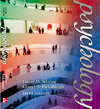 |
1 |  | 
A relatively permanent change in knowledge or behavior resulting from experience is known as: |
|  | A) | learning |
|  | B) | memory |
|  | C) | sensation |
|  | D) | perception |
 |
 |
2 |  | 
In classical conditioning, the learned response given to a particular conditioned stimulus is known as the: |
|  | A) | unconditioned stimulus (UCS) |
|  | B) | unconditioned response (UCR) |
|  | C) | conditioned stimulus (CS) |
|  | D) | conditioned response (CR) |
 |
 |
3 |  | 
In classical conditioning, an unlearned, automatic response to a particular unconditioned stimulus is known as the: |
|  | A) | unconditioned stimulus (UCS) |
|  | B) | unconditioned response (UCR) |
|  | C) | conditioned stimulus (CS) |
|  | D) | conditioned response (CR) |
 |
 |
4 |  | 
Which of the following time intervals between the CS and the UCS in classical conditioning produces the strongest conditioning? |
|  | A) | delayed |
|  | B) | trace |
|  | C) | backward |
|  | D) | simultaneous |
 |
 |
5 |  | 
In classical conditioning, the gradual disappearance of the conditioned response when the conditioned stimulus is repeatedly presented without being paired with the unconditioned stimulus is known as: |
|  | A) | trace conditioning |
|  | B) | stimulus discrimination |
|  | C) | stimulus generalization |
|  | D) | extinction |
 |
 |
6 |  | 
Susie, a five-year-old child, became nauseated after attending a friend's birthday party. Since then, she becomes nauseous at the thought of eating cake, and refuses to eat even her own birthday cake. This result is likely due to a conditioned: |
|  | A) | response |
|  | B) | stimulus |
|  | C) | taste aversion |
|  | D) | extinction |
 |
 |
7 |  | 
In 1920, John B. Watson experimentally induced a phobia in an infant later known as "Little Albert." What type of learning principle best explains Little Albert's phobia? |
|  | A) | classical conditioning |
|  | B) | operant conditioning |
|  | C) | instrumental conditioning |
|  | D) | law of effect |
 |
 |
8 |  | 
Edward Thorndike's principle that a behavior followed by a satisfying state of affairs is strengthened and a behavior followed by an annoying state of affairs is weakened became known as: |
|  | A) | classical conditioning |
|  | B) | operant conditioning |
|  | C) | instrumental conditioning |
|  | D) | law of effect |
 |
 |
9 |  | 
Which learning principle states that a behavior that has a higher probability of occurrence can be used as a positive reinforcer for a behavior than one that has a lower probability of occurrence? |
|  | A) | spontaneous recovery |
|  | B) | Thorndike's Law |
|  | C) | Premack principle |
|  | D) | law of effect |
 |
 |
10 |  | 
In operant conditioning, a neutral stimulus that becomes reinforcing after being associated with a primary reinforcer is known as_____: |
|  | A) | shaping |
|  | B) | secondary reinforcer |
|  | C) | primary reinforcer |
|  | D) | discriminative stimulus |
 |
 |
11 |  | 
An operant conditioning procedure that involves the positive reinforcement of successive approximations of an initially improbable behavior to eventually bring about that behavior is known as: |
|  | A) | shaping |
|  | B) | secondary reinforcer |
|  | C) | primary reinforcer |
|  | D) | discriminative stimulus |
 |
 |
12 |  | 
While training her puppy to "sit," Susie rewards the dog every instance the dog correctly responds to the "sit" command. What schedule of reinforcement is used? |
|  | A) | continuous schedule |
|  | B) | variable interval schedule |
|  | C) | fixed ratio schedule |
|  | D) | variable ratio schedule |
 |
 |
13 |  | 
After every third home run by an individual little-league baseball player, the coach rewards the player. What schedule of reinforcement is being used? |
|  | A) | continuous schedule |
|  | B) | variable interval schedule |
|  | C) | fixed ratio schedule |
|  | D) | variable ratio schedule |
 |
 |
14 |  | 
In operant conditioning, the gradual disappearance of a response that is no longer followed by a reinforcer is known as: |
|  | A) | escape learning |
|  | B) | avoidance learning |
|  | C) | spontaneous recovery |
|  | D) | extinction |
 |
 |
15 |  | 
The reversion of animals to behaviors characteristic of their species even when being reinforced for performing other behaviors is known as: |
|  | A) | behavioral preparedness |
|  | B) | instinctive drift |
|  | C) | learned helplessness |
|  | D) | blocking |
 |



 2002 McGraw-Hill Higher Education
2002 McGraw-Hill Higher Education

 2002 McGraw-Hill Higher Education
2002 McGraw-Hill Higher Education